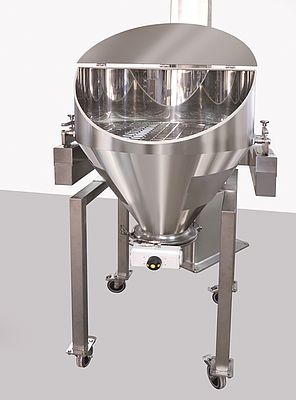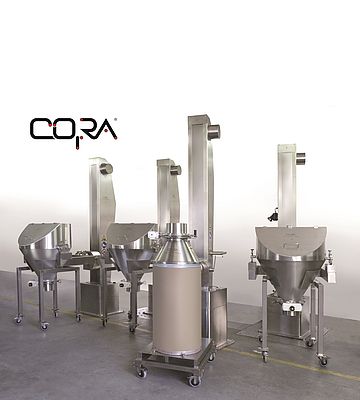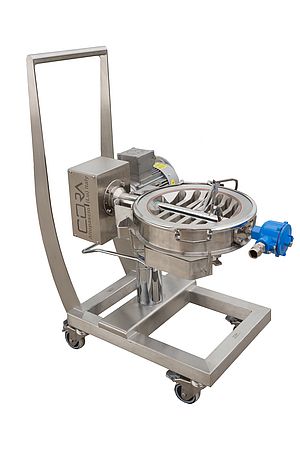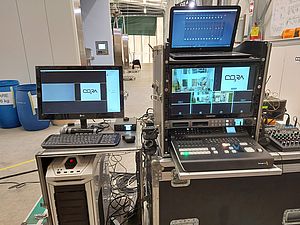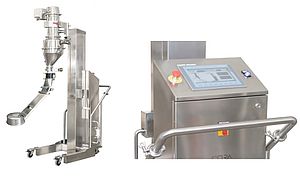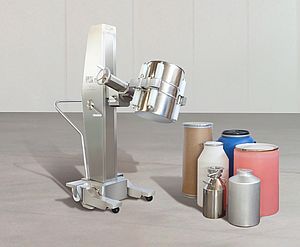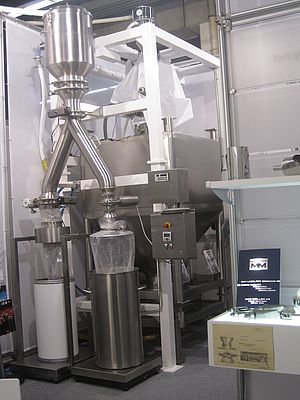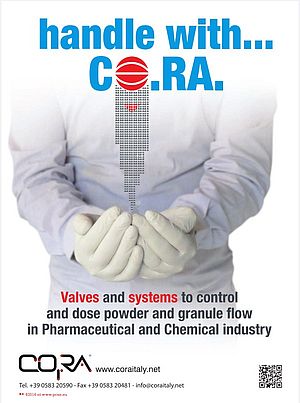The use of modular solutions in the process industry is able to guarantee production flexibility to the pharmaceutical producer who can thus afford production lines dedicated to several products, managing to amortize the cost of the plant in a shorter time and have less impact in terms of overall dimensions in the factory. At each production stage, maximum efficiency is required without sacrificing the quality typical of the pharmaceutical sector. All this requires procedural solutions that are increasingly automated and technologically advanced. One of the areas that are most subject to the optimization process is that of Solid Handling. And it is in this area and in the associated area of logistics that cost containment efforts are concentrated.
Often the tendency is to specialize more and more the departments and the personnel involved, dividing the skills that are specific to the production areas from those of the packaging areas. In this context, we often come up against organizational challenges that sometimes can hardly be overcome. For example, let’s take the need to transfer the raw materials and the active ingredients inside an IBC to proceed with the preparation of a mixture.
Maintaining the integrity of the product is essential and is a problem with which Dispensing departments in the pharmaceutical world are confronted daily. The Dispensing area is one of the key production areas, it is here that contamination is possible as the product is very exposed to the environment and where it is possible to commit mistakes during the dosing of various ingredients.
The challenge accepted by CO.RA. in this case, concerns the transfer of raw materials such as excipients or active ingredients inside an IBC. The solution developed, the CO.RA. DUK is a point of pride for the complexity of the project. Among the project specifications that CO.RA. took into account, is the need to have accurate and repeatable dosing (± 100g), a flexible and easily cleanable system.
The system must be a safe and ergonomic working environment for the operator as well as ensure that it can fill the various IBC’s with the different products that are found in the various containers that can be: drums of different sizes or paperboard sacks.
DUK SYSTEM
The flexibility of the system CO.RA. DUK is evident from the beginning of the handling cycle, with the use of the semi-automatic manipulator that has a lifting column function: rotation and tilting. The careful design and the care in the manufacturing of the CO.RA. DUK ensure it operates safely, according to the highest GMP standards and with a reliability that is typical of ball screw solutions in pharmaceutical environments.
Thanks to the quick release gripping system it is possible to load different types of raw materials stored in just as many types of different packages from time to time.
DISCHARGING HOPPER
In order to load the most common excipients like sugar or starch it is necessary to have a solution that will allow you to break the various bag formats safely and ergonomically. That is why CO.RA. designed a hopper with a “bag breaker” which is able to ensure discharge of powder under totally safe conditions. The hopper is equipped with a safety grid: to prevent the entry of foreign bodies in the product; a suction point: to limit dust clouds derived from violent discharges of powder; and a safety cap: to ensure the confinement of the powder discharged. The structure’s particularity is the disconnection system between the hopper and the trolley below, which imply benefits in the treatment of the product. By leaving the wheels on the ground and not bringing them over the bin it is guaranteed that the product is never contaminated by external agents.
GRIPPING ELEMENT WITH LOAD CELLS
While loading the various excipients it was necessary to weigh the product both when loading these into the hopper as well as when discharging them in the bin. The addition of this weighing system inside the gripping element allows us to constantly monitor the quantity of product present in it. Furthermore, thanks to the display, it is possible to dose the product with an accuracy of ± 100 gr which makes it a very precise system in comparison to many other systems where the weighing process is carried out directly in the bin, resulting in loss of resolution due to heavy loads.
CYCLONE
The cyclone located above the suction point, allows the recovery of product sucked up into a tank. In this case disposed of thrown away directly, so it does not clog the filters of the aspiration system.
ROTARY VALVE
By capsizing the drum or by simply discharging the product into the hopper, the powder is then conveyed to the dosing valve which is composed of a Rotary Valve. In this case the control of the rotary valve is not carried out by an automated system (PLC) but by a simple pneumatic control panel in order to simplify the operator’s activities. The achieved accuracy of +/- 100 g was more than satisfactory in this case. For safety reasons the rotary valve is equipped with sensors to avoid hazards during the cycle start-up.
CONNECTION SYSTEM
Prior to the actuation of the rotary valve it was necessary to ensure a connection system between the Bin and the bag breaker and between the Bin and the gripping element for drums. The most flexible solution was found to be a silicone cap with a center hole. This ensures an easy connection and above all avoids operations by the operators under the suspended load. Thanks to the limit switches installed on the CO.RA. DUK it was possible to precisely center the loading inlet of the BIN after lifting the product. In this way, with a simple rotation and descent the connection is made automatically. The connection is provided with mechanical sensors to ensure that the Rotary Valve will not open before the connection has successfully taken place.
CONCLUSION
With this new application we are able to handle 15 different types of drums and 8 different types of cardboard bags without having to make changes to the system. This ensures a wide range possibility to work with almost all types of pharmaceutical containers and not only. The proof lies in the fact that we have made four of these identical systems for the subject customer, who has chosen to follow the route of flexibility and speed even with vastly different packaging conditions.



